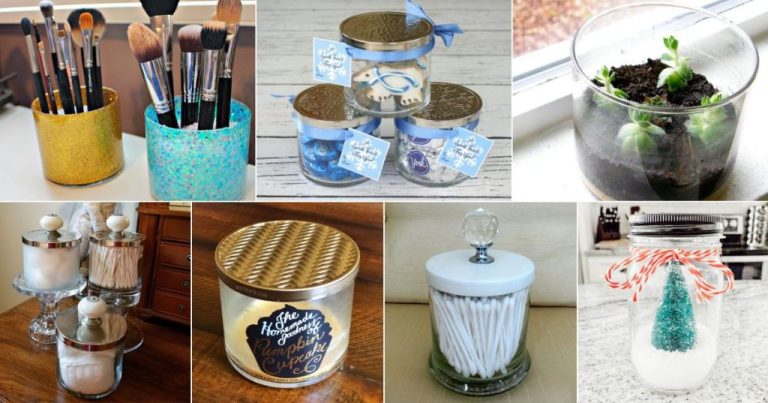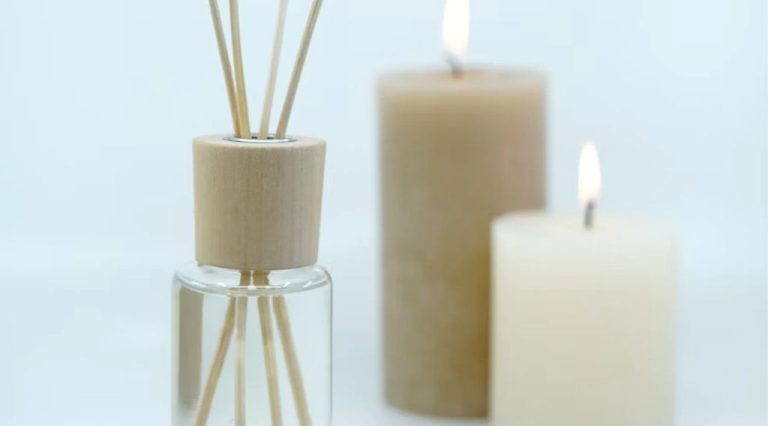How Do You Get Wax Out Of A Candle Without A Wick?
Getting wax out of a candle without a wick is a useful skill for several reasons. First, it allows you to reuse old candle jars, tins, and other containers. Once the wax is removed, these vessels can be repurposed for crafts, storage, or decor. Reusing candle containers is an eco-friendly and budget-friendly option compared to throwing them away or buying new containers.
Additionally, removing wax without a wick allows you to combine leftover wax from multiple candles. You can melt down the wax and create a new candle in any container you choose. This helps reduce waste by giving old wax new life.
Finally, getting the wax out lets you switch fragrances or colors in a candle vessel you want to reuse. If a specific jar has sentimental value, or you just love the style, removing the old wax gives it a fresh start. This article covers multiple techniques for getting wax out of candles without a wick so you can extend the life of your favorite candle holders.
Removing Wax with Hot Water
One of the easiest methods for removing wax from a candle container without a wick is by using hot water. This involves heating water to an ideal temperature and then pouring it directly into the candle jar or container. As the hot water hits the hardened wax, it will begin melting it. The key is to use water that is hot enough to liquefy the wax fully, but not so hot that it cracks or damages the candle vessel. Most recommendations suggest heating the water to a temperature between 150-200°F before pouring it in (see source).
Once the wax has fully melted, you can simply pour the liquid wax out and discard it. The hot water will have melted away all of the troublesome built-up wax inside the container. Be sure the container is fully cooled before handling it directly. You may need to repeat this hot water process a few times to remove all wax residue. But it provides a simple, effective, and safe way to thoroughly clean out a candle jar or vessel.
Freezing Candles

One easy way to get the wax out of a candle is to freeze it. Putting the candle in the freezer causes the wax to harden, which makes it much easier to remove from the glass or container.
Start by wrapping the candle loosely in plastic wrap or placing it in a plastic bag. This prevents freezer burn and helps contain any wax shards that may break off when removing the frozen wax. Place the wrapped candle in the freezer and leave it overnight or for at least a few hours until the wax is completely solid.
Once frozen, you can simply peel or chip away at the wax to remove it, using a butter knife or other tool to help scrape it out. Go slowly and carefully to avoid damaging the glass. The hardened wax should pop right out. Make sure to get all the wax residue off the sides as well.
Freezing candles makes wax removal fast and easy. Just remember to let the candle thaw completely before lighting it again or else the glass could crack from the temperature change.
[https://hip2save.com/tips/how-to-reuse-candle-jars/ Hip2Save.com]
Using a Hair Dryer
One simple method for removing wax from a candle without a wick is to use a hair dryer to melt the wax so it can be poured out. The heat from the hair dryer will liquefy the wax so it drips out of the container. Simply hold the hair dryer 6-12 inches above the candle and move it around until the wax melts enough to pour out any remaining wax residue (1).
Be cautious when using a hair dryer, as the concentrated heat could potentially start a fire if not handled properly. Keep the hair dryer moving and do not leave it aimed in one spot too long. Work in a well-ventilated area and keep flammable materials away. Monitor the wax temperature with your hand before pouring to avoid burns. Allow the container to fully cool before handling or refilling (2).
(1) https://www.ronhazelton.com/tips/how_to_remove_candle_wax_with_a_hair_dryer_and_credit_card
(2) https://www.ronhazelton.com/tips/how_to_remove_candle_wax_with_a_hair_dryer_and_credit_card
Baking Soda and Essential Oils
One effective method for removing wax is to make a paste using baking soda and essential oils. The gritty texture of the baking soda combined with the solvent properties of oils helps scrub away wax residue.
To use this method, mix together approximately 1/4 cup of baking soda with 5-10 drops of lemon, orange, or eucalyptus essential oil. Add just enough oil to form a paste-like consistency that sticks together when pressed.
Take the baking soda paste and gently rub it over the candle’s surface and into crevices to lift off remaining wax. Let it sit for 5-10 minutes before wiping clean with a dry cloth. The baking soda will absorb the wax while the oils help dissolve it.
For stubborn wax, you may need to repeat this process 2-3 times, reapplying more paste and letting it soak in before scrubbing again. The baking soda and essential oils should safely remove excess wax without damaging the candle surface.
Vinegar and Lemon Juice
Vinegar and lemon juice can be effective at dissolving candle wax thanks to their acidic properties. You can make a simple solution by mixing equal parts vinegar or lemon juice and warm water. For example, mix 1 cup vinegar or lemon juice with 1 cup warm water. The acidic solution will help break down the wax so it can be wiped away more easily.
According to Aunt Peaches (http://www.auntpeaches.com/2012/09/how-to-remove-candle-wax-from-glass.html), you can soak a cotton ball or cloth in the vinegar/lemon juice solution. Then, gently rub the area with wax buildup and let it sit for a few minutes. The wax should begin dissolving. You may need to scrub more firmly or reapply the solution to fully remove the wax.
This method works well for smooth surfaces like glass, metals, tiles and more. The key is not to rub too aggressively, which could scratch the surface. Let the vinegar or lemon juice sit and do the work dissolving the wax.
Heat Gun Method
Using a heat gun is an effective method for removing wax from candles. A heat gun allows you to target the wax with a powerful stream of hot air, melting it so it can be easily poured or wiped out. Heat guns are readily available at most hardware stores.
To use this method, plug in the heat gun and set it to a medium-high temperature setting. Hold it a few inches above the wax and move it around, keeping it moving to prevent overheating any one area. As the wax melts, tilt the candle container to let the liquid wax pour out into a heat safe container. For wax left in crevices, use a paper towel to wipe it away while the wax is liquefied.
Take care when using a heat gun. The stream of hot air can reach temperatures of 1000°F or more. Keep your fingers away from the direct stream and do not leave the heat aimed in one spot too long, as this can damage the candle container. Work in a well-ventilated area since the heat gun can produce strong fumes. The high heat can also be a fire hazard, so keep flammable materials away.
Removing Wax with Oil
One of the easiest methods for removing wax from a candle container is to use cooking oil. Oils are able to dissolve and break down wax, making it easy to wipe away. Here’s how to use this technique:
Pour a small amount of a cooking oil like vegetable, canola, or olive oil into the candle container. Make sure to coat the entire surface area where wax remains. Let the oil sit for 10-15 minutes so it has time to fully soak into the remaining wax residue.
As the oil soaks in, it will dissolve and loosen up the hardened wax. After letting it sit, take a paper towel and wipe out the inside of the container. The wax should wipe away much more easily now. You may need to apply a bit more oil and repeat the soaking process for any stubborn areas of wax buildup.
Once the wax is removed, wash out the container with warm soapy water to remove any remaining oil residue. The oil helps break down the wax bonds, allowing you to simply wipe it away without needing any harsh scraping or scrubbing.
Removing Wax with Oil
One effective household item for removing candle wax is WD-40 (https://indoorgamebunker.com/will-wd-40-remove-candle-wax/). WD-40 helps break down the wax and makes it easier to wipe away. To use this method, first spray a generous amount of WD-40 directly into the candle container or onto the wax stain. Allow it to sit for 5-10 minutes to penetrate the wax. Then, take an old cloth or paper towel and scrub at the wax. The WD-40 will help loosen the wax and allow you to wipe it away with some elbow grease. You may need to reapply WD-40 and scrub multiple times to fully remove all of the built-up wax. Just be careful using WD-40 on any surfaces that could be damaged by oil stains. But it’s an inexpensive and effective solution for tackling stubborn candle wax.
Conclusion
There are many different ways to remove wax from candle containers in order to reuse them. The most common methods include using hot water, freezing, hair dryers, baking soda, vinegar, oils, and heat guns. Each method has its own benefits and drawbacks.
The hot water method is one of the easiest and most effective ways to remove wax. All you need is a pot of hot water to melt the wax so it can be poured out. Freezing candles makes the wax brittle so it chips off more easily. Using a hair dryer melts wax quickly without needing hot water. Baking soda acts as a gentle abrasive and essential oils help mask scent. Vinegar and lemon juice also help dissolve and break down wax residue.
For very stubborn wax, a heat gun can blast away any remaining bits with concentrated heat. Oils like coconut or olive oil saturate the wax so it slides right off the container. WD-40 also lubricates wax buildup. No matter which method you choose, the result is a clean, reusable candle container.
The main benefits of removing wax from candles is to reuse old candle jars and containers. This prevents waste and eliminates the need to buy new jars or containers. It also allows you to customize containers by cleaning them out and using them for homemade candles. Reusing containers is an easy way to be environmentally-friendly and thrifty.






